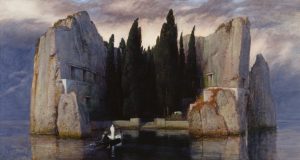Childrearing 101
What’s the best way to get your kids to be obedient? Lie to them, of course! Tell them frightening tales of monsters who will get them if they don’t do what they are told. So, when you read fairy tales or nursery rhymes to your children, be sure you are reading the REAL ones – not the updated happy-lovey versions. You know, the one where Rumpelstiltskin rips himself in half, or Hansel & Gretel cook the witch, or the evil scissor-guy cuts off the thumbs of the thumb-sucker.
Shortly after the Brothers Grimm published their collected stories (in German), a guy named Erben published similar set of fairy-tale poems in Czech. Antonín Dvořák, being a nationalistic composer of the Czech people, composed music after the poetry. “The Noonday Witch” is a tone poem in which the story is clearly laid out by the music:
A mother scolds her baby for making so much noise; she complains about what a nuisance he is. She threatens to call the “noon witch” to come and take him away if he doesn’t do as she asks. Whether or not the witch comes is up to interpretation – but either way, the mother becomes frightened that the witch has arrived and is about to steal her child. She clutches the child close to her breast, and faints. When the woman’s husband arrives home, he finds his wife passed out on the floor, and his child dead in her arms – suffocated by the mother’s hold.


Recent Comments